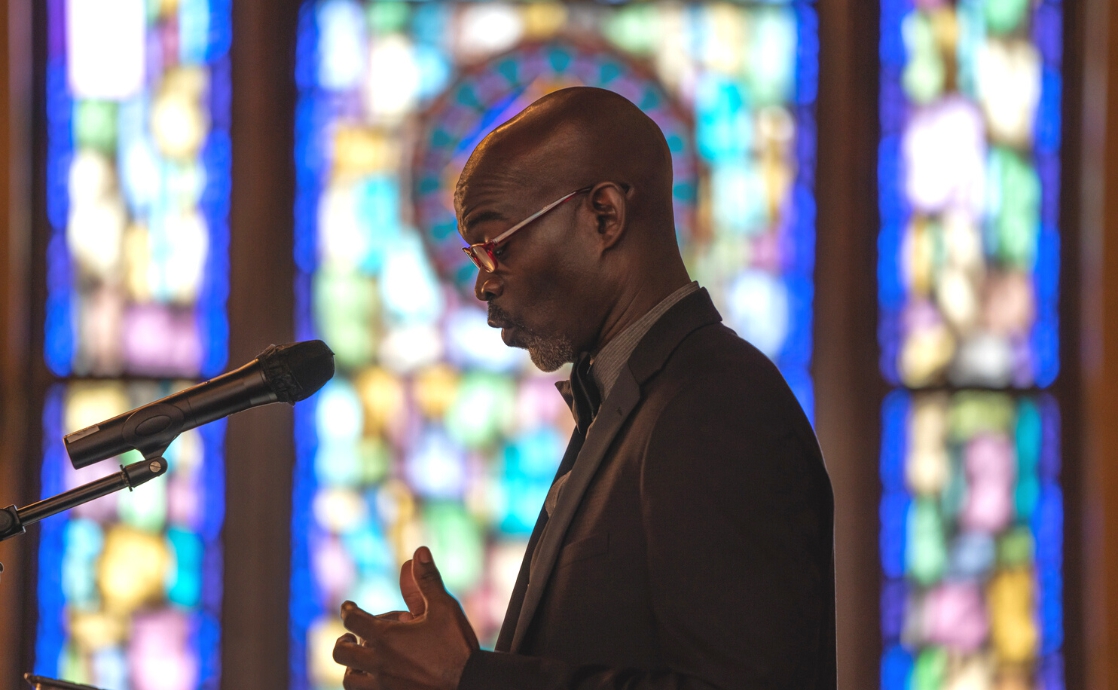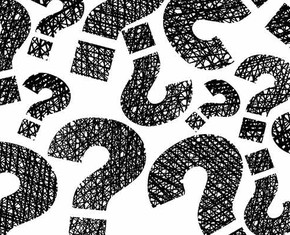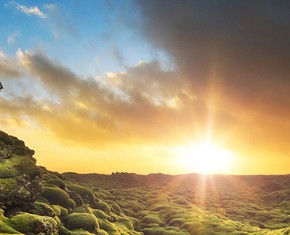The views expressed in our content reflect individual perspectives and do not represent the authoritative views of the Baha'i Faith.
The historically significant Baha’i initiatives to promote American interracial harmony – referred to as “race amity” in the early 20th century – led to a large number of African Americans becoming Baha’is.
The word “amity” means, according to the Oxford English Dictionary: “Friendship, friendliness, cordiality; friendly relations, esp. of a public character.” In the years when the United States permitted slavery, and in the following period generally called the Jim Crow era, when interracial religious activities were relatively unknown, the American Baha’i community made a serious, extended, and sometimes dangerous effort to unite the races.
RELATED: Harlem, 1920: An Entire Black Church Embraces the Baha’i Faith
The Baha’i scholar Richard Hollinger has kindly shared a part of his prepublication manuscript about those early American race amity efforts with us. So this topic is all the more timely, as it is attracting both academic and popular attention among those interested in the history of the Baha’i Faith in America, and especially in its outreach to African American communities.
According to Mr. Hollinger’s new book chapter – called “The Spread of the Baha’i Faith among African Americans, 1898–1925,” published in a new book (released on January 6, 2023) titled The Baha’i Faith and African American Studies: Perspectives on Racial Justice, edited by Loni Bramson and Layli Maparyan – more than one African American pastor was active in Harlem’s First Emmanuel Church. Hollinger writes:
Later in 1918, the Harlem Baha’is began to develop a relationship with the Emmanuel Church in Harlem. The church was founded in 1914, when a group of parishioners at the Mother AME Zion Church rejected the Bishop’s transfer of their pastor, Richard M. Bolden, and formed a new church with him. Several of the Harlem Baha’is had some social connection to Bolden: Charles Sims was a member of the Emmanuel Church as was the daughter of Sarah J. Walker (Viola) and the niece of Louise Washington (Paulina Jackson). In addition, Edward Braithwaite had been secretary to the AME Zion bishop during Bolden’s tenure at that church.
There is evidence of a more direct relationship between Baha’is and the church beginning in August 1918, when a presentation on the Baha’i teachings was given to the church’s Literary Club, and a Baha’i speaker, Louis Gregory, was the featured speaker two weeks later. The first of these was probably arranged by Louise Washington, who hosted the first meeting and whose niece was a member of the club. The evolution of the Harlem Baha’i group over the rest of 1918 and 1919 is not clear, but it appears to have recruited several new members: William and Mamie Davenport, who are listed on a 1920 Baha’i membership list, and James T. Simpson, an African American minister, who had served as a chaplain in the US Army troops in France during World War I, and had settled in New York City after the war. In 1919, Rev. Simpson wrote to Abdu’l-Baha about the possibility of going to Africa as a Baha’i missionary, suggesting that he had studied the religion and had some extended contact with Baha’is; his fiancé, Sara Caroline Stright, also wrote to Abdu’l-Baha at about the same time. Simpson was active in Baha’i meetings that began to be held at the Emmanuel Church on Sunday afternoons in January 1920.
In response to Rev. James T. Simpson’s offer to travel to Africa to promote the universal and unifying principles and practices of the Baha’i Faith, Abdu’l-Baha replied:
O thou servant of God!
Thy letter and thy poems arrived. From their contents it became known that, praise be to God, thou art ablaze with the burning fire of the love of God, hast secured a share and portion from the bounty of the Spirit and hast purposed to render a distinguished service to the divine Kingdom and to be the cause of the promulgation of the oneness of mankind.
If it is possible and easy, undertake a journey to North Africa and enkindle there the fire of the love of God and summon the souls to the Revelation of Baha’u’llah and to the unity of mankind, so that religious, racial, sectarian and worldly prejudice may not remain and all may be brought to a full realization of the Truth. If thou goest, assuredly the confirmations of God shall assist thee.
I pray on your behalf that the light of guidance may shine in the hearts, divine bestowals may be extended and heavenly bounty may shine in full radiance.
In this world whatever thou doest is ultimately fruitless save service to the Kingdom of God and to all mankind.
Upon thee be greeting and praise! – Abdu’l-Baha, Tablet to [Rev.] James Simpson, translated by Shoghi Rabbani [Shoghi Effendi], Acca, Palestine, July 20, 1919, Star of the West, Vol. 11, No. 10 (September 8, 1920), pp. 166–167, https://bahai.works/index.php?title=File:SW_Volume11.pdf&page=166 and https://bahai.works/index.php?title=File:SW_Volume11.pdf&page=167.
On Thursday evening, October 28, 1920, during the weekly “Rainbow Circle” meeting hosted by the First Emmanuel Church, Rev. Simpson gave his own talk, a testimonial entitled, “How I became a Bahai.” In addition to the news story about his talk, Rev. Simpson’s name appears more than 40 times in The New York Age coverage of current events at the First Emmanuel Church in its approximately two years of local religious news reporting.
Simpson was a young man when he earlier served in the 1898 Spanish-American War in the Philippines and had a chance to visit Asian countries. Because travel abroad tends to broaden one’s outlook on the world at large, no doubt this experience expanded Simpson’s worldview, and widened the horizons of his religious universe as well.
RELATED: Harlem’s First Emmanuel Church and the Baha’i Principle of Racial Unity
He was discharged from military service in 1905, was ordained first as a Methodist, then as a Presbyterian, and then as a Baptist pastor. A photograph of “Rev. James T. Simpson, B. A.” was published by The Pittsburg Press (the old spelling of Pittsburgh) on Sunday, August 27, 1911, Page 27, giving this brief biographical account of his life:
The Bethany Baptist church, on Tioga st., in the Brushtno district, has been so fortunate as to secure as a successor to Rev. S. A. Jordan, their former pastor, a comparatively young man, as years go, but one whose life span of 29 years has been crowded to the full with an earnest effort to learn something, to do something, and to be something, in the person of Rev. James T. Simpson. He is a native of Abbeville, S. C, received his preliminary education in the public schools of South Carolina, and the Ferguson Academy — now known as Harbison college. Served in the United States regular army during [the] Spanish-American war, rising from the ranks to the position of battalion sergeant major, and in connection with his other duties officiated as post school teacher, especially in Spanish and higher mathematics. He also utilized his spare time to become proficient in civil and military engineering, military and international law, tactics and military science. He saw service while in the army in Cuba and the Philippines, and subsequently visited Japan and other points of interest in the Pacific region. In May, 1905, desirous of entering the ministry, he secured his discharge from the army, became a member of the Army and Navy Y. M. C A. at Brooklyn, N. Y., and later matriculated as a junior in the art and science department of Rust university. Completing his studies at this institution he became military instructor at Biddle university, Charlotte. N. C. and incidentally took an advanced course in Greek and Latin classics and theology. He was first authorized to preach by the presbytery of Birmingham, Ala. At Charlotte, N. C., he was occasionally called upon to preach in colored Methodist churches, and he was finally prevailed upon to become ordained a member of that denomination and was sent as the pastor of the A. M. E. Zion church at Carnegie, Pa., where his intelligence and business ability soon made itself felt … [He] has about him all the hall-marks of an earnest and scholarly apostle of salvation and peace. He is quite an addition to the local clergy, and has already been honored by being called upon to preach the introductory sermon at the recent sitting of the Union Baptist association which convened in the Carron Street Baptist church, where his ripe knowledge and manner of presentation- was warmly commended.
We quote this detailed biographical newspaper account of Rev. Simpson at length, not only due to its intrinsic interest, but especially as religious background to his continuing quest for spiritual truth, which we’ll further explore in the next essay in this series.

















Comments
Sign in or create an account
Continue with Googleor